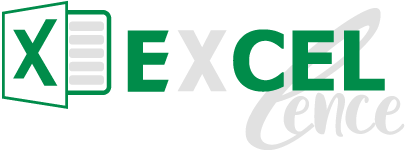The risk analysis in business is an essential component to ensure sustainability and competitiveness in an ever-evolving commercial landscape. In this article, we will examine in detail seven essential tools and methods that allow for the effective identification and evaluation of risks, thereby ensuring proactive and informed management of vulnerabilities.
Importance of Risk Analysis for Large Enterprises and SMEs:
The brainstorming approach provides a conducive space for the open expression of ideas within teams. By encouraging free thinking and the exchange of ideas, this method allows for the holistic identification of potential risks, taking into account the diverse perspectives of team members. Through this collaborative process, companies can consider a multitude of scenarios and perspectives, contributing to a more comprehensive evaluation of risks.
SWOT Matrix: Assessing strengths and weaknesses for targeted risk management:
The SWOT matrix proves to be an essential tool for evaluating both the internal and external aspects of a business. By identifying potential threats in the context of the company’s opportunities and strengths, the SWOT matrix helps prioritize risks and implement tailored management strategies. This method enables companies to leverage their competitive advantages while developing targeted action plans to mitigate identified risks.
Root Cause Analysis: Anticipating risks by understanding their origins:
By scrutinizing the fundamental causes of previous issues, root cause analysis helps anticipate future risks. This method enables proactive prevention of the emergence of new risks by understanding underlying patterns and trends. Emphasizing long-term resolution, this approach provides a crucial perspective for sustainable risk management.
Delphi Technique: Consulting experts for an informed risk assessment:
The Delphi Technique involves soliciting anonymous and iterative responses from experts and key stakeholders. By gathering diverse perspectives, this method allows for an informed consensus on potential risks and the development of appropriate strategies accordingly. Consulting experts ensures a thorough risk assessment, thus providing a solid foundation for well-informed risk analysis decisions.
Checklist: A systematic approach for a comprehensive risk assessment:
Using a checklist based on past and recent data provides a systematic approach to identify recurring and emerging risks. This method ensures that less obvious risks are not overlooked, thereby guaranteeing a comprehensive and thorough assessment.
By employing this systematic approach, businesses can ensure that all critical aspects are taken into account and comprehensively evaluate their exposure to risks.
HAZard and OPerability studies (HAZOP): Analyzing risks in an operational and systemic manner:
The HAZard and OPerability studies (HAZOP) method breaks down the system into subsets for a comprehensive analysis of operational risks. By assigning specialized teams to each area, this method allows for the identification and treatment of risks at a systemic level, ensuring proactive management of vulnerabilities.
Focusing on operational details, this approach provides a detailed insight into potential risks and facilitates the implementation of targeted mitigation measures.
Preliminary Risk Analysis (PRA) and the Systematic Organized Method for Risk Analysis (MOSAR): A structured approach to identify sources of danger:
Preliminary Risk Analysis (PRA) and the MOSAR method provide a structured approach to identify all sources of danger in a given system. By using detailed reference grids, these methods allow for the adoption of preventive measures tailored to each identified risk source.
This systematic approach ensures that every critical aspect is taken into account, thereby enhancing the resilience of the business against a variety of potential risks.
Conclusion
In conclusion, proactive risk management remains a fundamental cornerstone to ensure the sustainability and competitiveness of businesses in an ever-evolving commercial environment. The tools and methods presented in this article provide a valuable perspective to identify, assess, and mitigate risks, enabling companies to make informed decisions and maintain resilience in the face of uncertainty.
In a context where digitization plays an increasingly crucial role in risk management, companies can enhance their ability to anticipate risks and seize new growth opportunities, thus ensuring a strong position in the constantly evolving global market and sustainable prosperity.
To automate and optimize your risk management processes with a customized solution, feel free to contact our VBA experts today for a quote and discover how you can strengthen the robustness of your business.

